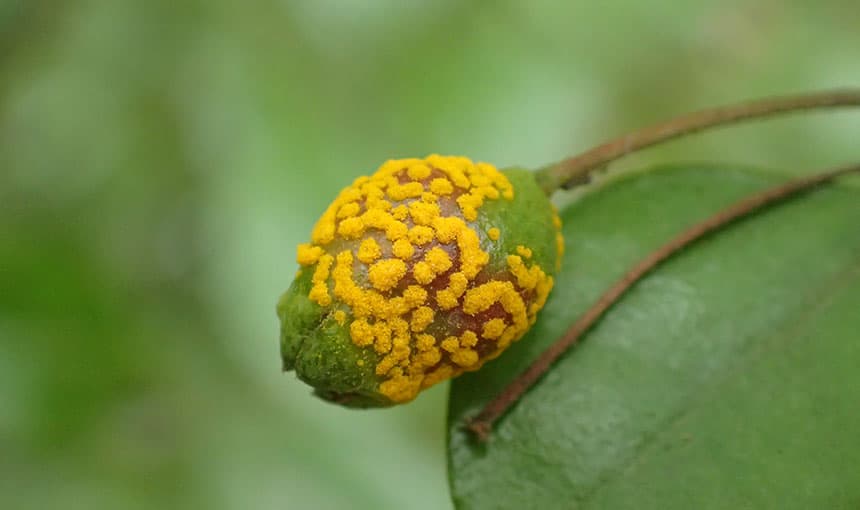In a trans-Tasman collaboration, researchers from Australia and Aotearoa New Zealand have unlocked the genetic secrets of Austropuccinia psidii, the fungus responsible for myrtle rust. This work has led to the assembly of the largest fungal genome to date, and it’s been published in the journal G3: Genes, Genomes, Genetics.
“Rust fungi seem to be a lot larger than other fungal genomes studies to date” says Dr Peri Tobias. Most research so far has focused on rust fungi that infect grasses, as they are an important problem in agriculture, and rust that infect grasses tend to be a lot smaller than those that infect non-grasses. “I think that as we study more fungal genomes we will start to see a lot more large genomes.”
The large size of the genome is likely due to a high number of transposable elements – areas that are genetically unstable and can allow the introduction of new mutations. The presence of so many transposable elements may have enabled the fungus to adapt to and infect new hosts, allowing it to spread to many different species in the myrtle family.
“These could be evolutionarily advantageous to the fungus and allow it to infect more species making it particularly problematic. We need to investigate this further to understand the implications on host plants.”
Several different strains of the A. psidii fungus exist, and this sequence is of the ‘pandemic’ biotype which has spread throughout Asia-Pacific and Oceania regions, including Aotearoa New Zealand.
Myrtle rust has been on our shores since March 2017, and infects native species in the myrtle family such as pōhutukawa, rātā and ramarama. Due to the wind-borne nature of the disease, myrtle rust has spread rapidly since its detection, with research focusing on finding ways to manage and slow the spread of the disease in the long term.
“To understand the way the fungus infects plants we really need to understand the mechanisms at the molecular level. This means doing molecular studies into the genes. We can really only do this with good genetic information as a starting point. The genome will also allow us to monitor changes in the pathogen population to allow better border control.”
Understanding the genome of the fungus is an important tool in the fight against myrtle rust, opening up further opportunities for molecular and genetic research. Now that the genome has been sequenced, this information can be used to help with investigation into how the fungus infects different plants, and what can be done to facilitate disease resistance.
“Similar to our monitoring of coronavirus genetic mutations and changes to virulence, we hope to manage the spread of myrtle rust by looking for changes or new incursions based on the genome.”
